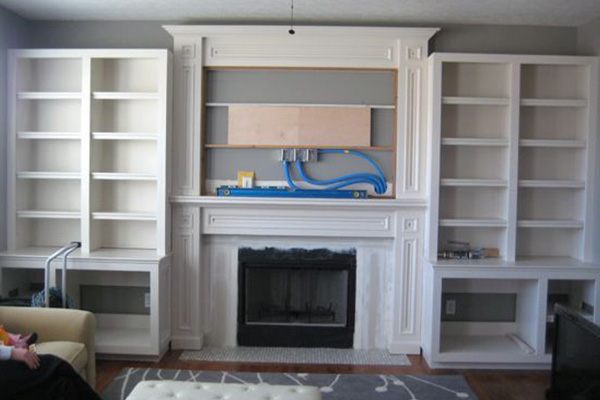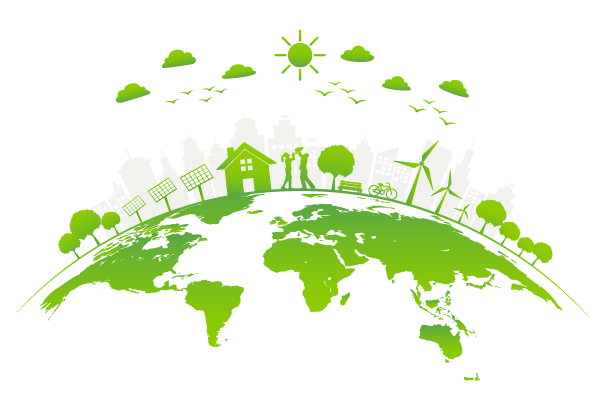Blog Contest Winner — Hidden Pipes, Hidden Wires
This article is a part of a series of posts submitted by students from around the world who are passionate about environmental sustainability. This article, specifically, comes from James Cato and was created on March 24, 2018.
Published: Dec 25, 2020

It would be so much simpler to confront if we could just see it.
My mind always drifts to environmental degradation while driving on the highway, watching trees blending through the glass. It’s obvious when I see the concrete river neatly parting the woods in my modern silver canoe. Not so much as I write this in my warm dorm, 90s hip-hop thrumming from my Bluetooth speaker.
In my room, all that energy appears from nothing — and it’s a lot of energy. Like sorcery, I don’t see where it came from, or what it took to conjure it up. All of us know that all the light and warmth and music does come from somewhere. Yet we’re insulated inside our buildings.
This is a snag.
Because my environmentalism has always manifested through nature. I can best grasp environmentalism when I go to the braided creeks, green leaves nodding in my peripheries, and see no monster on their banks. No disposable water bottle wafting in an endless loop wedged in a maw of pithy sticks. No shredded plastic grocery carcass.
It’s an accomplishment.
So few are the tales of victory in the quest for sustainability. We feel our victories when we’re by the braided creek and see white-tipped sprouts beside the trail. Even better, when we see a school of fish pecking the rocks for algae, or a tall doe wicking her tongue in the water with a mindful hoof perched in the shallows.
In this case, the stainless bottle strapped to my backpack made the difference. All of our crafted bottles made the difference. Unfortunately, when we can’t see what our reusable bottles are doing, it’s much easier to forget why we should choose them.
People in North America spend more than 90% of their life indoors.1 When we wash our hands the water runs down the drain, never to be seen again (by us). I’m always struck by our lack of feedback on the natural world. Unlike our ancestors, and indeed many of our contemporaries on Earth, we rarely experience the volley-and-return of ecological communication. 2
When I was stationed in Nicaragua for a service project, I noticed the intimate feedback that had been largely absent in my home outside Philadelphia. During my time in Nicaragua, I worked in a town remote enough that Google Maps had yet to discover it. Most of the families here owned collective coffee-bean farms spread throughout mountainous jungles. Thin goat-paths winding from a single dirt road connects all of the homes and farmlands.
With a lush canopy only fifteen steps from my home, I didn’t lack for feedback here. If my host family were to extract several bathtubs of water, the springs and creeks would visibly dwindle. My garbage was not whisked away to an inscrutable location, so we reused it when we could. The kitchen was filled with an assortment of pretty glass bottles to take along for the day’s muggy work.
My host father, Antonio, explained his decisions to plant crops on certain hills, with a specific give between each plant to minimize corrosion and maximize health. Another flora was granted admission to the grounds to ‘balance out’ the slope. One hill, he noted affectionately, the entire town agreed to preserve because it has the best view of the fog-filled valley below.
I would not glorify the very difficult and impoverished life that my host family and their neighbors lead. As a respectful visitor though, their reciprocal relationship with the environment was impressed upon me. When we altered our surroundings to serve a purpose in town (for instance, we dug a new latrine pit), it noticeably affected our world (the area began to smell and could not be used for recreation or farming). This feedback was interpreted and, in turn, influenced future decisions.
Back home in the United States, I miss that feedback. Our decisions do not noticeably affect our world. Imagine if we cranked the heat, only to turn to see a uniformed worker loudly drilling a new fissure through the bedrock under the lawn! Our impact is hidden from us. Similarly, our accomplishments in preservation and sustainable technology often exist out of our sightline.
Yet we’re adapting.
This semester I had the privilege of participating in a research project that works to reconnect us with the effects of our behaviors inside buildings via technology. It’s called sociotechnical feedback. Over the years this research has culminated in digital signs that show flows of water, natural gas, and electricity on an animated display. Finally, I can see a system that supports my life.

With this new form of feedback, a cranked thermostat causes an accessible, real-time graph display to spike. Animations trace back through power lines react to represent the change in consumption. This exciting technology brings ecological communication to modern buildings hundreds of miles from fracking, coal-mines, and deforestation. Research shows that this new form of feedback lowers resource consumption. 3
Confronting our influence on our woods, our braided creeks, our animals, and our plants, requires seeing what our environment is communicating to us, good or bad. We can keep up-to-date with environmental news to learn of others’ accounts of our planet’s changing surface, along with new technological feedback. I urge you to engage with these forms of ecological communication. And I urge you to continue exploring the conversation outside.